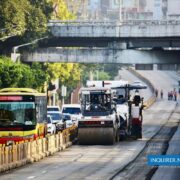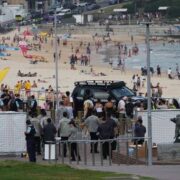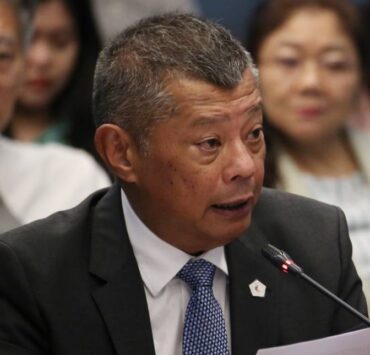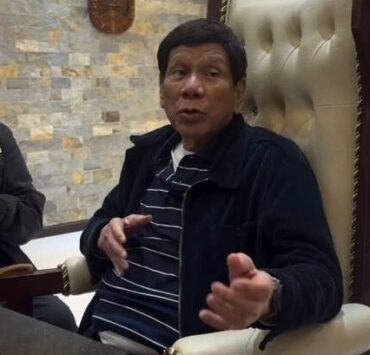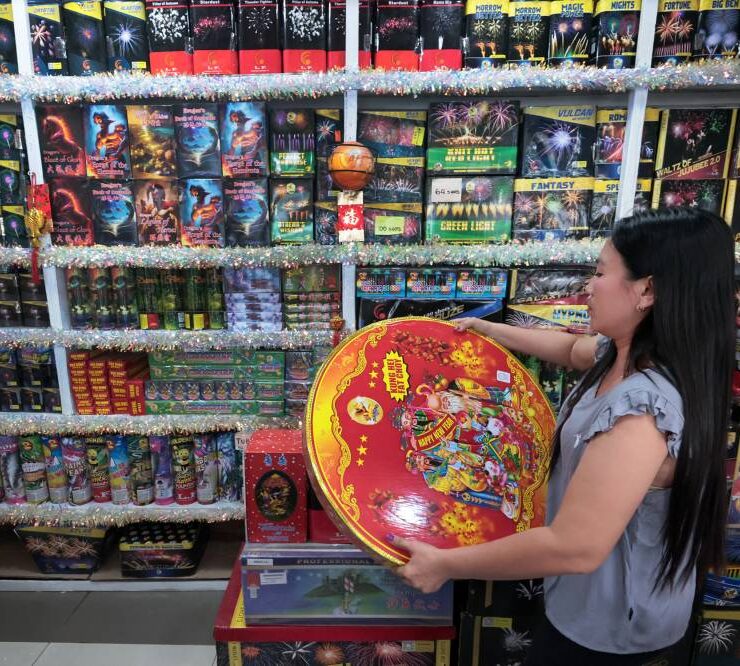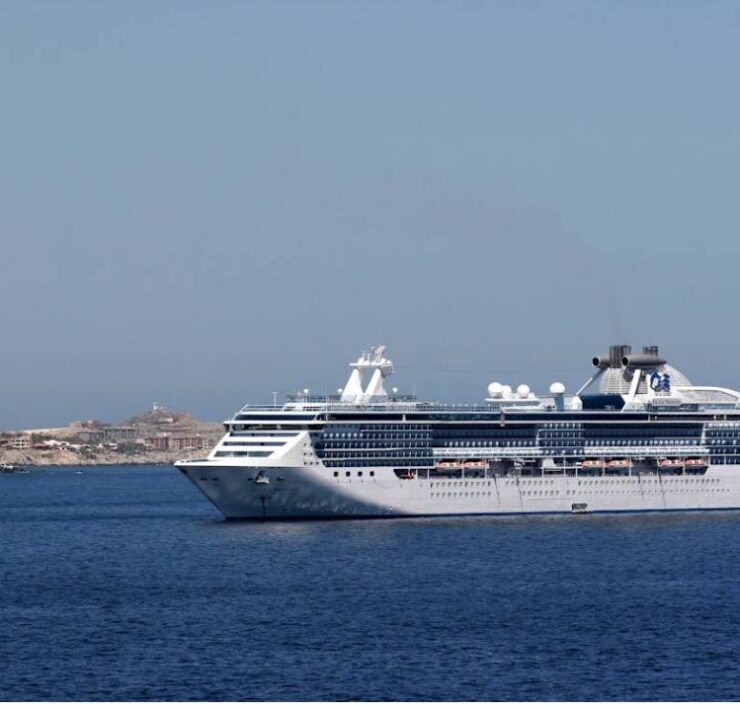7 dead as 7.4 quake strikes off Davao Oriental
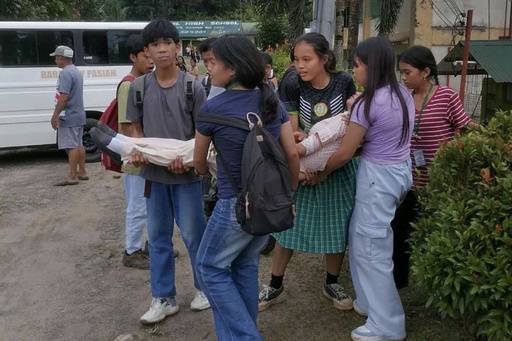
At least seven people were reported dead after a magnitude 7.4 earthquake struck off Davao Oriental on Friday morning, followed about 10 hours later by another temblor with a magnitude of 6.9, with the coastal town of Manay bearing their brunt.
The 9:43 a.m. quake—its epicenter about 40 kilometers to 60 kilometers southeast of Manay’s coast—was the third to hit the country in a span of 10 days and the strongest yet. On the night of Sept 30, it was Cebu province that got hit by a magnitude 6.9 earthquake that left 74 people dead.
In an update to reporters on Friday afternoon, Davao Oriental Rep. Cheeno Miguel Almario described two of the fatalities as a 54-year-old woman killed by a falling wall and an “elderly confined at the Davao Oriental Medical Center who [succumbed to] cardiac arrest because of panic.”
Authorities said a third still-unidentified fatality had been killed by a collapsed structure in Calapagan village, Lupon town, Davao Oriental.
Around 9 p.m., the Office of Civil Defense said the death toll had risen to seven. It included three landslide victims at Gumayan mining site in Kingking, Pantukan town, Davao de Oro province.
Joseph Randy Loy, head of the Davao de Oro Disaster Risk Reduction and Management Office, told the Inquirer by phone that three people were killed in the landslide in Gumayan.
In Davao City, several establishments and some banks were closed following the quake which sent people scrambling out of buildings and into the streets.
Chaos after quake
Patients at the Southern Philippines Medical Center (SPMC) who were evacuated at the height of the quake were later returned to the hospital, while others were sent home.
The Philippine Institute of Volcanology and Seismology (Phivolcs) had issued tsunami alerts to coastal towns of Davao Oriental, Surigao del Norte and Surigao del Sur after the 6.9 quake at 7:12 p.m.
Davao Oriental and its neighboring provinces lie in the northeastern to southeastern coast of Mindanao.
Phivolcs said it recorded 458 aftershocks in 41 different areas in Davao Oriental, as of 8 p.m.
There were the common cries of people—“Lord, tabang! Hunonga na, Lord!” (Lord, help us! Let this stop, Lord!)—captured on raw videos uploaded on social media.
People rushed out of office buildings and their homes and sought safety in the chaos following the quake, many shouting their pleas.
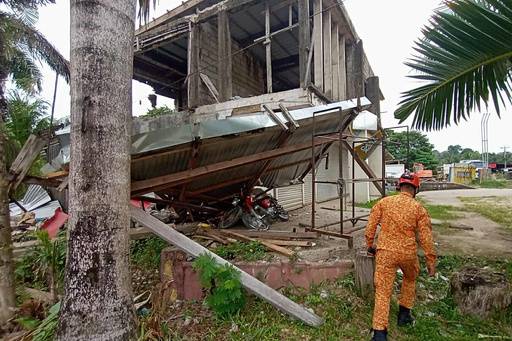
Marcos, VP monitoring situation
President Marcos has tasked concerned government agencies to assist the quake victims. “We are now assessing the situation on the ground and ensuring that everyone is safe,” Mr. Marcos said in a statement. “I have directed the National Disaster Risk Reduction and Management Council, the Office of Civil Defense, the Armed Forces, the Philippine Coast Guard, and all concerned agencies to immediately carry out evacuations in coastal areas, activate emergency communication lines, and coordinate closely with local governments.”
Vice President Sara Duterte’s office said its Southern Mindanao Satellite Office is “closely monitoring the situation…[and] on standby to assist any local government unit (LGU) in providing relief to evacuees, should the need arise.”
Friday’s quake was the most powerful to hit the Davao region since the magnitude 6.9 temblor struck Davao del Sur on Dec. 16, 2019. But the most powerful quake in Mindanao was the magnitude 8.1 tremor in the Moro Gulf in 1976 which left a large swathe of destruction in coastal communities of Zamboanga del Sur, the Lanao provinces, and Maguindanao, including Cotabato City.
The quake cut a trail of destruction in many communities in Mindanao, especially in Manay town where it was felt at Intensity 6.
It was at Intensity 5 in Mindanao’s key urban centers of Davao, Cagayan de Oro and Butuan cities; Intensity 4 in faraway Tacloban City, and mostly Intensity 3 in Cebu province.
Beyond Mindanao
Phivolcs said the temblor’s “ground motion” was also felt beyond eastern Mindanao and reached as far as Leyte and Samar in Eastern Visayas, Bohol in Central Visayas and Iloilo, Antique, Capiz in Panay island and Negros Occidental in Western Visayas.
Amid the quake’s impact in the Visayas, classes were suspended, people evacuated from buildings and officials moved swiftly to prevent casualties and assess damage.
In Bohol, the quake sparked panic in Tagbilaran City as parents rushed to fetch their children, while employees and guests listening to the State of the Province Address at the provincial capitol were evacuated to open areas.
In Iloilo City, officials led by Mayor Raisa Treñas conducted an inspection of city hall’s main building, its engineering office and Facility Conservation Office, while the Iloilo Provincial Disaster Risk Reduction and Management Office inspected buildings in coordination with municipal governments in the province.
The regional office of the Department of Education advised schools to conduct safety checks before resuming in-person classes.
Meanwhile, the regional office of the Department of Public works and Highways inspected bridges and roads beginning in Iloilo.
In Eastern Visayas, the quake triggered class and work suspensions, temporary power outages and precautionary evacuations across Leyte, Samar and Eastern Samar.
In Tacloban City, hospitals briefly evacuated patients, and several offices and businesses relocated outdoors as aftershocks were felt.
Classes at the University of the Philippines in Tacloban were canceled, and a mall nearby was temporarily closed to allow structural inspections. —WTH REPORTS FROM ELDIE AGUIRRE, JOSELLE BADILLA, LUISA CABATO, EDWIN FERNANDEZ, JOEY A. GABIETA, WILLIAMOR MAGBANUA, CHRIS PANGANIBAN, LEO UDTOHAN, HAZEL VILLA, CHARIE ABARCA AND INQUIRER RESEARCH











